Present-day Indigenous education of Bhaarat and Career Counseling
Posted by anhad on October 7, 2024
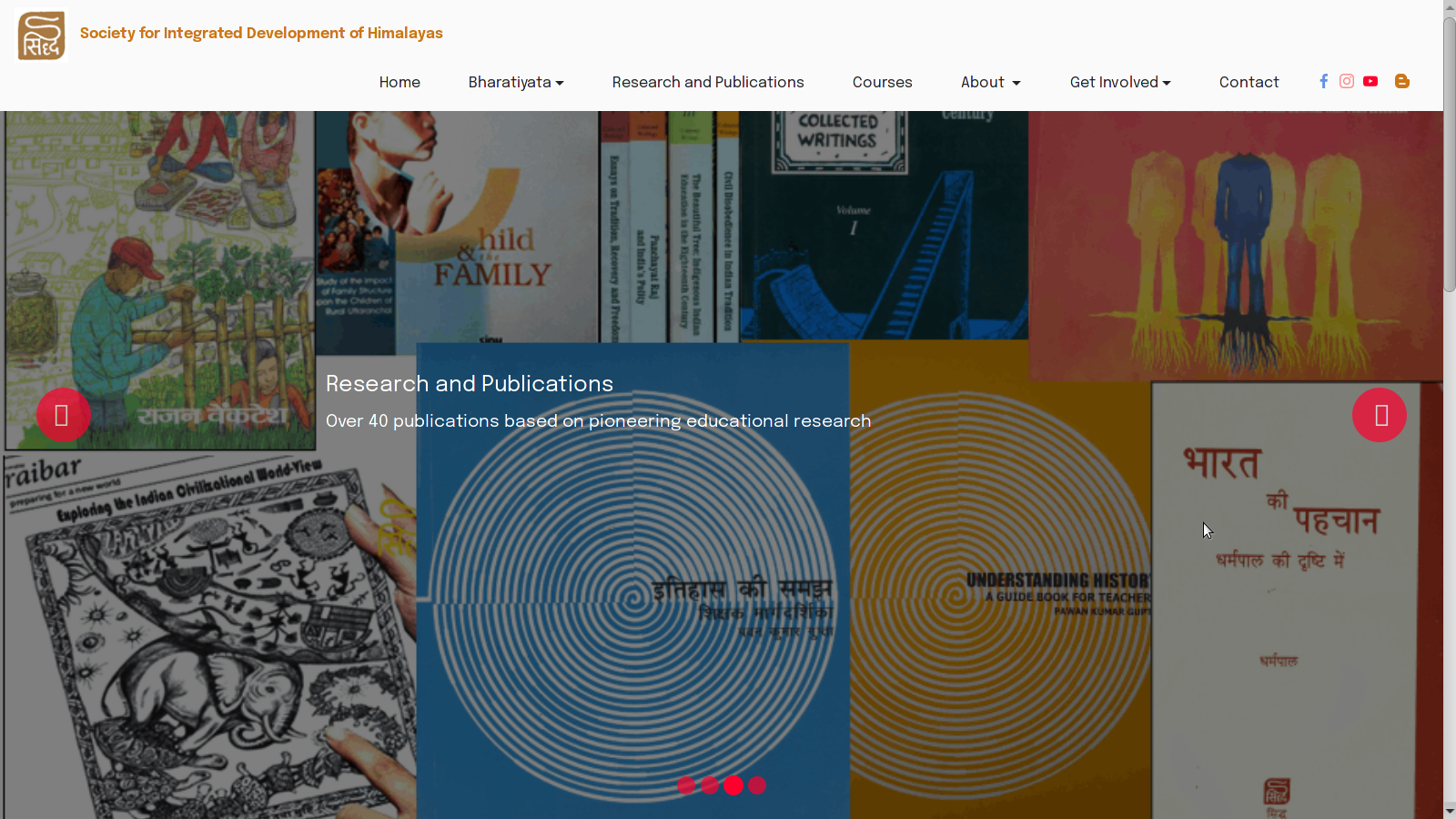
Indigenous Education of Bhaarat and Career counseling :
Indigenous Education of Bhaarat/भारत –
Before 1835, India and China were the richest countries of the world before 1835 because Indian graduates
studying from our indigenous schools were intelligent. In 1835, five lakh Indigenous schools were destroyed and implementation of curriculum of modern education was done by British rule minister T.B Maccaulay. Modern education causes mental torture to students. Modern education makes Indian students arrogant and they stop respecting their parents.
Difference between Indigenous schools and modern schools :
- In indigenous schools, only one subject is taught throughout the day. In modern schools, 8 subjects are taught on a single day for 45 minutes for each subject.
2. In indigenous schools, the syllabus taught in each subject had 30% theory and 70% practical. During exams of indigenous schools, 30% marks are for theory and 70% for practical. In modern schools, the ratio is 70% theory and 30% practical.
3. In indigenous schools/college, the child student takes admission at the age of 6 years and completes education at the age of 21 years.
In modern schools/college, the child students takes admission at the age of 3 years and completes education at the age of 20 years.
4. Students of indigenous school are told that they should not indulge in any love affair, dating or sexual activities till the age of 21 years. After 21 years, they can choose the marriage partner of their choice and get married first and then indulge in sexual activities with the marriage partner.
5. Students who complete their studies from indigenous schools are respectful, helpful and obedient towards their parents and teachers. Students who complete their studies from modern schools are mostly arrogant, disrespectful and do not help their parents.
Please Note – As adults, many people stop reading books. The reason is that curriculum of modern education is so boring and a mental torture that students stop reading books after completing their education.
These are the 8 types of indigenous schools/colleges in Bhaarat who have survived foreign rule :
1. Kalaa ashram, Adilabad –
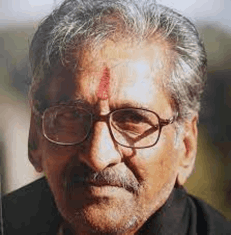
Guruji Ravindra Sharma, the founder of Kalaashram in Adilabad, was an artisan and storyteller who mesmerized people with his reminiscences of his childhood in Adilabad, a part of the India that was relatively untouched by the British destruction machine. Please Listen to a seminar talk by Guruji here.
https://www.youtube.com/watch?v=A-pMQeKe8GI
Please click on link below to watch You-tube channel of Guru ji Ravindra Sharma without getting tracked-
https://yewtu.be/channel/UCp8XoJ3Q3oUar9TCfQXDPCw
According to speech given by Ravindra Guru ji in the above you-tube link, these are the 6 aspects of a happy family that are taught to all students in indigenous schools of Bhaarat :
- Marriage has to be done at the age of 21 years after completing studies from indigenous school
- All family members should be healthy. All of them should practise rules of ayurveda and get their treatment done through ayurveda.
- All family members should not go against society and should not behave like terrorists
- Their should be no financial problems in the family. All adults should work honestly by choosing a profession according to their mind’s aptitude..
- All family members should move in the direction of spirituality. All family members should practise yoga
- All family members should respect environment and not cause damage to environment
~~~~~~~~~~~~~~~~~~~~~~~~~~~~~~~~~~~~~~~~~~~~~~~~~~
2. Society of Integrated development of Himalayas , Mussoorie :
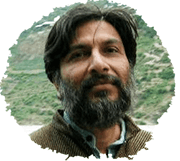
SIDH was founded by IIT graduate Pawan and his wife Anuradha who had worked as a school teacher. SIDH is both an indigenous school and college.
Workshops, seminars, retreats and courses organized by SIDH –
Starting 1989, SIDH has conducted various workshops, seminars and retreats at its campus at Kempty near Mussoorie. Previous workshops have included those on traditional education in India, on language and learning, Ravindra Sharmaji’s discourses on traditional Indian society etc. These are the 3 types of courses :
a) Full-time residential courses are provided for school students.
b) SIDH provides 1-year residential course for college students above the age of 16 years.
c) Special workshops are organized by SIDH on the topics of Modernity and The Original Mind.
http://www.sidhsri.org/courses.html#CourseIntro
SIDH website link –
SIDH documentary :
For watching SIDH documentary uploaded on you-tube privately without being tracked, please click on the link below :
https://inv.nadeko.net/watch?v=5fKAEsvORH0
Arun Elassery is team member at SIDH :
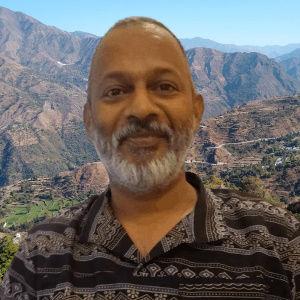
Books published by SIDH :
Most of the books published by SIDH were written by Dharampal

Dharampal (Hindi: धरमपाल) (19 February 1922 – 24 October 2006) was an Indian historian, historiographer, and a Gandhian thinker.[4] Dharampal primary works are based on documentation by the colonial government on Indian education, agriculture, technology, and arts during the period of colonial rule in India.[5][6] He is most known for his works The Beautiful Tree: Indigenous Indian Education in the Eighteenth Century (1983),[7] Indian Science and Technology in the Eighteenth Century(1971) and Civil Disobedience and Indian Tradition (1971), among other seminal works, which have led to a radical reappraisal of conventional views of the cultural, scientific and technological achievements of Indian society at the eve of the establishment of Company rule in India. Dharampal was instrumental in changing the understanding of pre-colonial Indian education system.
https://en.wikipedia.org/wiki/Dharampal
For reading about List of subjects taught and list of books published by SIDH, please click the web-link below :
http://www.sidhsri.org/bharatiyata.html#BharatiyataResources
For purchasing books published by SIDH, please contact Paramjit . His email address is pammidaid@gmail.com and his contact no. is +91-9761724365.
~~~~~~~~~~~~~~~~~~~~~~~~~~~~~~~~~~~~~~~~~~~~~~~~~~
3. Indian Institute of Scientific Heritage, South India :
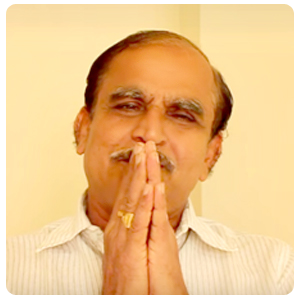
Dr. N. Gopalakrishnan is the founder of IISH.
Indian Institute of Scientific Heritage (IISH) was established on the Sravana Pournami day in August 1999 and registered as a charitable trust (328/99/iv)during the last quarter of 1999. Then onwards IISH has been undertaking the mission of learning and teaching the ultra ancient heritage of Bharath(India) using ultra modern scientific and technological tools.
The ultimate aim of this mission is to make every Indian proud of his heritage.
Our aim is to inform the world about the glorious scientific, rational and logical heritage of India and also inform the world to practice and adopt these message in their life to lead a happy life in the 21st century. IISH is undertaking this mission of taking the message to 100 million people before the 31st December 2010. Hundreds and thousands of mission oriented workers are taking part in this patriotic mission of spreading the message of our motherland. We learn and teach the past glory, present achievements and future aims of Indian in each and every field, taking the inspiration for the past glory of this nation.We inform the world that this heritage of India is the property of Hindus, Muslims and Christians of India and also belongs to all beloved children of this motherland. Thus IISH spreads the scientific, technological, spiritual, sociological, anthropological, managemental messages to the world, in such a way that these messages can be adopted for the modern world.
IISH website :
Please click on the web-link below and download the ebook “We Claim These are Indian Discoveries” and “351 messages on Management” for reading :
~~~~~~~~~~~~~~~~~~~~~~~~~~~~~~~~~~~~~~~~~~~~~~~~~~~
4) Udhbhavaha, Bangalore :
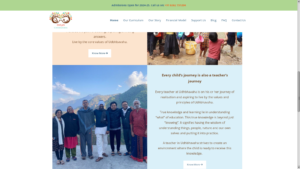
At Udhbhavaha, we attempt to provide a holistic education that nourishes the head, heart and hands of the child, growing into balanced individuals capable of making a difference to society and sustaining oneself.
We are a community of teachers, children & parents who are seeking to lead a connected-purposeful life and want to create an environment grounded in our culture.
We are in this ongoing journey of understanding real education and its connectedness to life. In this journey, inspired by the thoughts of Shri K.S. Narayanacharya, Shri Ravindra Sharmaji, Shri Dharampalji, and Shri Pawan Guptaji, we became cognizant of the fact that the inquiry into education inevitably connects us to our Bharatiya culture, history, and social fabric. From this continuous pursuit, emerged the dream of Udhbhavaha
~~~~~~~~~~~~~~~~~~~~~~~~~~~~~~~~~~~
5. श्री जगदेव सिंह संस्कृत महाविद्यालय, सप्त ऋषि आश्रम, जिला हरिद्वार :
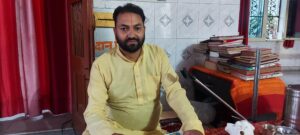
प्रवीन सुयल ने हरिद्वार के गुरुकुल श्री जगदेव सिंह संस्कृत महाविद्यालय, सप्त ऋषि आश्रम में विद्या प्राप्त की थी |
आचार्य प्रवीन अब शिव-शक्ति मंदिर, गुरु हरिकिशन नगर , बजवारा गाँव के पास स्थित मंदिर, पंजाब में पंडित का काम करते है |
~~~~~~~~~~~~~~~~~~~~~~~~~~~~~~~~~
6. Present-day Nalanda University located in Rajgir, Bihar –
According to Pawan Gupta, founder of SIDH, the curriculum of Present-day Nalanda University is not good.


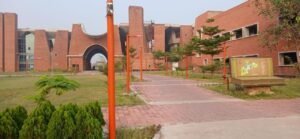
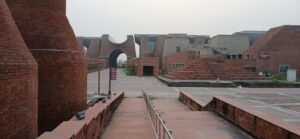
Situated besides the Rajgir hills, the rejuvenated Nalanda University calls-out “Learning is being here.” The experience of being in this intellectual landscape is empowering with its seamless co-existence between nature and man, and between living and learning. The region vibrates with the positivity endowed by spiritual divines like Lord Buddha, Lord Mahavira who meditated in this region and with the scholarly traditions developed by great masters such as Nagarjuna, Aryabhatta, Dharmakirti who discoursed at the ancient Nalanda. Ancient Magadha was characterized by an intellectual ferment rarely known to humanity. The opportunity to comprehend multiple discourses and embrace knowledge in its entirety is what made Nalanda academics unique and attractive for all seekers.
The first residential university of the world founded at Nalanda by the magnanimity of Emperor Kumaragupta in 427CE and sustained by the conscientiousness of the learned monks and teachers, flourished for over 800 years till the end in 12th century CE. It is believed to possess 2,000 teachers and 10,000 students. Nalanda had attracted scholars to its campus from places as distant as China, Korea, Japan, Tibet, Mongolia, Sri Lanka, and South East Asia. Those scholars have left records about the ambience, architecture, and learning at Nalanda, as well as, about the profound knowledge of Nalanda teachers. The most detailed accounts have come from Chinese scholars and the best known of these is Xuan Zang, who carried back many hundred scriptures which were later translated into Chinese.
According to the records Nalanda University was destroyed three times by invaders, but rebuilt only twice.
a) The first destruction was caused by the Huns under Mihirakula during the reign of Skandagupta (455–467 AD). But Skanda’s successors restored the library and improved it with an even bigger building
b) The second destruction came in the early 7th century by the Gaudas. This time, the Buddhist king Harshavardhana (606–648 AD) restored the university
c) The third and most destructive attack came when the ancient Nalanda University was destroyed by the Muslim army led by the Turkish leader Bakhtiyar Khilji in 1193. According to historical accounts, Khilji and his army invaded the university and set fire to its buildings, destroying the library and killing the scholars and monks who were living there.
https://historytoknow.com/nalanda-india-history/
Vision of Present-day Nalanda University –
- Establishment of an international institution for pursuit of intellectual, philosophical, historical and spiritual studies and for matters connected therewith or incidental thereto;
- The revival of the Nalanda university to improve regional understanding and the appreciation of one another’s heritage and history;
- To build a community of learning where students, scholars, researchers and academicians can work together symbolizing the spirituality that unites all mankind.
Opinion of Pawan Gupta sir related to Nalanda University –
“I have been at the Nalanda University last few days for a symposium around dharampal ji. A beautiful campus, superb location near the great Nalanda of olden times and Rajgir. Bhagwan Mahavira was born very close by and the great Gautama Buddha meditated and achieved enlightenment not far from here. So this entire location is speacial and sacred. But I wonder if our institutions acknowledge and recognise this great legacy and heritage leave alone build and create courses and events which can take advantage of this energy and heritage. The students come from I am told about 40 countries mainly Asia, Africa and Latin America too. A huge campus and the architecture of buildings have certainly been inspired by the old Nalanda. But that is about all. I was imagining/expecting serious meditation, yagna, discourses, prayers, yoga, happening in the campus. It is filled with potentialities and possibilities but I don’t know what it is in our institutional framework that does not support such an environment. हमारी संस्थागत फ्रेमवर्क में ही सेक्युलर नीरसता और शुष्कता घुस गई है, लगता है। लोग अच्छे हैं, फिर भी ऐसा क्या है जो हमारी विरासत से जो स्वतः निकलना और पोषित पल्लवित होना चाहिए वह नहीं हो पाता। यहां तो कुछ विद्वानों को ला कर बसाना चाहिए जो अपनी अपनी विद्याओं को बगैर बंधन और आर्थिक चिंता के, आगे बढ़ा सकें। जैसे संगीत, नृत्य, ज्योतिष, वेदांत, गणित, इत्यादि। यह संभव तो है पर….”
Website of Nalanda University –
https://nalandauniv.edu.in/about-nalanda/vision/
~~~~~~~~~~~~~~~~~~~~~~~~~~~~~~~~~~~~~~~~~
7. कथक के घराने or Gharanas of Kathak –
According to scholars, the initial source of gharana originated from the word griha of Sanskrit. The hindi word Ghar was formed from Griha in Sanskrit and the word Gharana evolved from Ghar. A house that has some different type of speciality for its identity is called Gharana.
In each gharana, the mode of foot work and body movements are different. Raigarh King Raja Chakradhar Singh emerged as a sensitive protector of arts in the early twentieth century. Due to Raja Saheb’s deep affection and respect, the best and senior dancers and Gurus of Lucknow, Jaipur and Banaras took shelter together in the Raigarh court. Together they decided different dimensions of artistic creation.
According to this, the current four Gharanas of Kathak dance have been accepted :
a)-Lucknow Gharana
Describing Shri Ishwari Prasad ji as a native of the Handia region in Prayagraj (Allahabad), he was established as the original founder of the Lucknow Gharana of Kathak dance. Handia is one of the areas whose main inhabitants have been storytellers. It was said that Ishwari Prasad had seen Lord Krishna in his dream and inspired him to make the Nritya Bhagavata.
b)-Jaipur Gharana
Bhanuji was the first promoter of the Jaipur Gharana who received the education of Tandava Nritya from a saint. His son was Malu ji who imparted his father’s dance lessons to his two sons Lalu ji and Kanu ji. Kanuji received training in Natvari dance from Vrindavan as well.
c)-Banaras Gharana
The third Gharana of Kathak dance is popularly known as Banaras Gharana or Janaki Prasad Gharana. Janaki Prasad was a resident of Varanasi and the brother of the famous tabla player Pandit Ram Sahay Ji.
d)-Raigarh Gharana
In keeping with the image of independent India, Kathak incorporates the merits of its diverse family in Raigarh. King Raja Saheb could clearly see the truth that in the coming times, a well rounded dance structure will be able to make its place in the society. With this vision, he began to carve and shape this dance in his court.
Therefore, in this gharana, where one side we see the aspect of the difficult taalang, on the other side, there is also a sense of finesse and elegance.
https://www.kathakclub.com/gharanas-kathak-jaipur-lucknow-banaras-raigargh-gharana-history-starting
~~~~~~~~~~~~~~~~~~~~~~~~~~~~~~~~~~~~~~~~~~~
8. Classical Music :
a) Vrindaban Gurukul – It is a priceless living heritage of Indian music that is inimitably built on the foundation of an ancient musical tradition of India – the Guru-shishya parampara. The Gurukul is the home of the Guru (Master) and Kula (his musical family). The sounds and vibrations of the building, established in 2002 and situated in Mumbai are steeped in upholding the highest standards of musical excellence. Built from the patronage received of Sir Ratan Tata Trust, the raison detre of the Gurukul, is nothing short of a feat demonstrating how a rich and invaluable art form of India is being preserved and passed on through generations. Vrindaban Gurukul opened its second abode in 2010 in the resplendent and verdant locales of Bhubaneswar, Odisha.
https://hariprasadchaurasia.com/vrindaban-gurukul
b) Saraswati Ved Sagar Gurukul for Classical Music
Saraswati Ved Sagar Gurukul is affiliated to Bhatkhande Vidyapeeth, Lucknow. Swarmani Sangeetacharya Pt. Banwari Lal Ji Sharma is giving services to the students. Various Artists are invited from Mumbai and Delhi. Various Workshops are conducted on regular basis by the Gurukul.
In Vocal gurukul is providing training of Pure Classical Khayal Gayan, Pad Gaysn, Mahavani Gayan, Thumri Gayan, Haveli Sangeet etc. In Instrumental gurukul is providing training of Tabla, Pakahwaj, Harmonium, Sitar, Flute, Dholak etc. etc. In Dance gurukul is providing training of Kathak.
What is Music:
Music is a form of art and cultural expression that uses sound and silence as its medium. It encompasses a wide range of elements, including melody, harmony, rhythm, dynamics, timbre, and form. People create music through the organized arrangement of these elements, often using instruments, voices, or electronic devices.
Indian classical music is a traditional and highly intricate form of music that has its roots in ancient Indian scriptures and cultural traditions. It is divided into two major traditions: Hindustani classical music and Carnatic classical music.
a) Hindustani Classical Music:
- Region: Primarily practiced in North India.
- Instruments: Sitar, tabla, sarod, santoor, flute, and others.
- Vocal Styles: Dhrupad and Khayal are two main vocal styles. Dhrupad is more ancient, devotional, and focuses on the purity of the ragas, while Khayal is more popular and allows for greater improvisation.
- Ragas and Talas: The music is based on ragas (melodic scales) and talas (rhythmic cycles). Each raga has a specific set of ascending and descending notes, creating a unique mood. Talas provide a rhythmic framework for the music.
- Improvisation: A significant aspect of Hindustani classical music is improvisation, where musicians explore and expand upon the ragas and talas in real-time.
b) Carnatic Classical Music:
- Region: Primarily practiced in South India.
- Instruments: Veena, violin, mridangam, ghatam, flute, and others.
- Vocal Styles: Carnatic music includes various vocal styles like Kriti, Varnam, and Padam. Kritis are compositions that explore ragas and talas.
- Ragas and Talas: Similar to Hindustani classical music, Carnatic music relies on ragas and talas. However, the specific ragas and talas in Carnatic music differ from those in Hindustani music.
- Precision and Structure: Carnatic music places a strong emphasis on precision, with compositions often having intricate rhythmic and melodic patterns.
Common Features of Indian Classical Music:
- Ragas and Talas: Both traditions use a system of ragas and talas to structure their music.
- Devotional Elements: Many compositions in both traditions have devotional themes and are used in religious contexts.
- Guru-Shishya Parampara: The tradition of learning is often passed down from a Guru (teacher) to a Shishya (disciple) in a one-on-one learning environment.
https://www.saraswativedsagargurukul.com/about.html
~~~~~~~~~~~~~~~~~~~~~~~~~~~~~~~~~~~~~~~~~~~~
News article on the topic ‘India’s pathshalas or indigenous schools were inclusive institutions. Dalits and Brahmins studied together in indigenous schools.
~~~~~~~~~~~~~~~~~~~~~~~~~~~~~~~~~~~
Career counseling for children and adults –
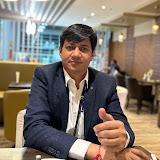
Profession should be chosen according to mind’s aptitude under the guidance of Career Counselor.
Meet Dr. Devender Balhara, India’s foremost Parenting Coach, Counselor, and Educational Innovator! With a diverse portfolio spanning Counseling, Teacher Training, and Curriculum Development for numerous schools, Dr. Balhara is a multifaceted professional dedicated to nurturing young minds. His impactful work includes mentoring prodigious talents like the renowned wonder kid Yashashvi Balhara and his research has touched the lives of over 20,000 children. Join us as we explore Dr. Balhara’s insights, strategies, and inspiring journey towards shaping the future of education and parenting in India and beyond. :
You-tube channel of Dr Devender :
https://www.youtube.com/@drdevenderbalhara4337
To view this you-tube channel privately without tracking, please click on the link below :
https://invidious.privacydev.net/channel/UCyvSVEmjv02hxgj2TWDZF1g
Doctor Devender Balhara’s interview on ‘Importance of Counseling in Parenting and Education’ :
~~~~~~~~~~~~~~~~~~~~~~~~~~~~~~~~
Please purchase organic food products from Anhad Organic Shop by calling on +91-8448855021 or sending an email on kuberkapoor@inventati.org. We will provide home delivery of organic food products purchased by you. Please click on the web-link below :
https://anhadfoundation.noblogs.org/shop/
~~~~~~~~~~~~~~~~~~~~~~~~~~~~~~~~~~~~
Request for subscription to mailing list of Anhad Foundation :
If you want to receive details of Research Blogs, Book launches, ‘Shop’ menu section and Event updates of Anhad Foundation by email, please send this email to kuberkapoor@inventati.org :
“My name is ABCD. I want to subscribe to mailing list of Anhad Foundation”
Written by
Kuber arora kapoor
Filed under General
